8 SI Joint Exercises to Help You Avoid Aches
The sacroiliac joints of your lower spine could be the root of many of your aches and pains. Here's how to fix them.
You might be used to dealing with aches and pains in your knees or wrists, and know what to do about them. But what about your SI joint? If you’re not familiar with this area at the base of your spine, it should be on your radar.
In fact, it might already be causing you trouble without your realising it: Researchers attribute between 15 and 30 percent of chronic lower back pain to the SI joint.
And unfortunately, the aches associated with this joint don’t stop at your back—it could extend to your glutes or groin and could range anywhere from a dull, constant ache to a sharp, shooting pain, making it sometimes tough to pinpoint.
Keep reading to find out more about what your SI joint is and why cyclists are particularly prone to issues around it, plus eight PT-approved SI joint exercises to help get back in the saddle in no time.
What is the SI joint?
“The sacroiliac, or SI, joints are located at the pelvis and connect the sacrum to each pelvic bone,” says Hamish Vickerman, a physiotherapist based in Australia. “These joints are very stable and strong with limited movement due to their bony structure and strong ligamentous support.”
Issues start to crop up when the joints become too loose, sometimes caused by pregnancy and childbirth, or too tight—and moving the two sides unevenly or sitting for prolonged periods (hello, every bike ride ever) can contribute to the latter. That can lead to pain in your lower back, butt, or groin.
“Trauma, like falling off a bicycle, is a common cause of SI joint pain, but cyclists are also prone to this injury if they’re not putting equal pressure on the pedals,” says Brian Gurney, D.P.T., C.S.C.S., a trainer, board-certified sports clinical specialist, and physical therapist at BeFit Therapy in New York City. “This can be caused by a muscular imbalance in their range of motion around their hips and or weakness in the core and glute stabilisers, or if there’s a discrepancy in the length of your legs.”
How do you avoid SI joint issues?
Avoiding big jumps in your training can help you sidestep SI issues to begin with. “Gradual progression allows your body to adapt to the increased demands placed on it, while sudden spikes in load can potentially trigger SI joint symptoms—so a sensible build up in training loads can minimize this risk,” says Vickerman, who also advises making sure your bike is properly fitted to help reduce stress and strain on the SI joint.
Keeping all the muscles of your core and lower body strong also helps by better supporting and stabilising the SI joint; Vickerman recommends incorporating exercises that work your glutes, hip flexors, quads, and hamstrings specifically at least twice a week.
If you’re experiencing pain and think your SI joint might be to blame, first of all, get off your bike. “Riding unfortunately will continue to aggravate the injury,” says Gurney.
Next, schedule a check-in with an orthopaedic doctor (who may request imaging) and a physical therapist ASAP—they’ll be able to determine whether the ache is truly an issue with your SI joint (versus something else, like a lumbar/lower spine disc injury) and whether imbalances or other factors contribute to it.
In the meantime, try these eight strength exercises and stretches. They can help ease the pain associated with SI joint issues but also prevent them in the first place—so they should be in every cyclist’s training arsenal.
8 SI Joint Exercises to Help Ease Aches
1. Deadbug
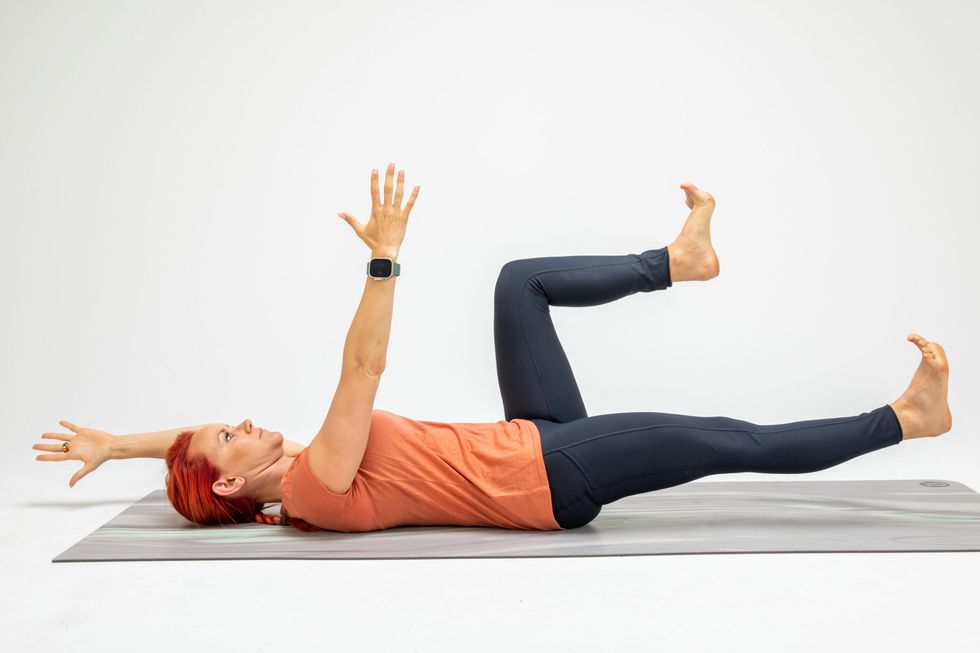
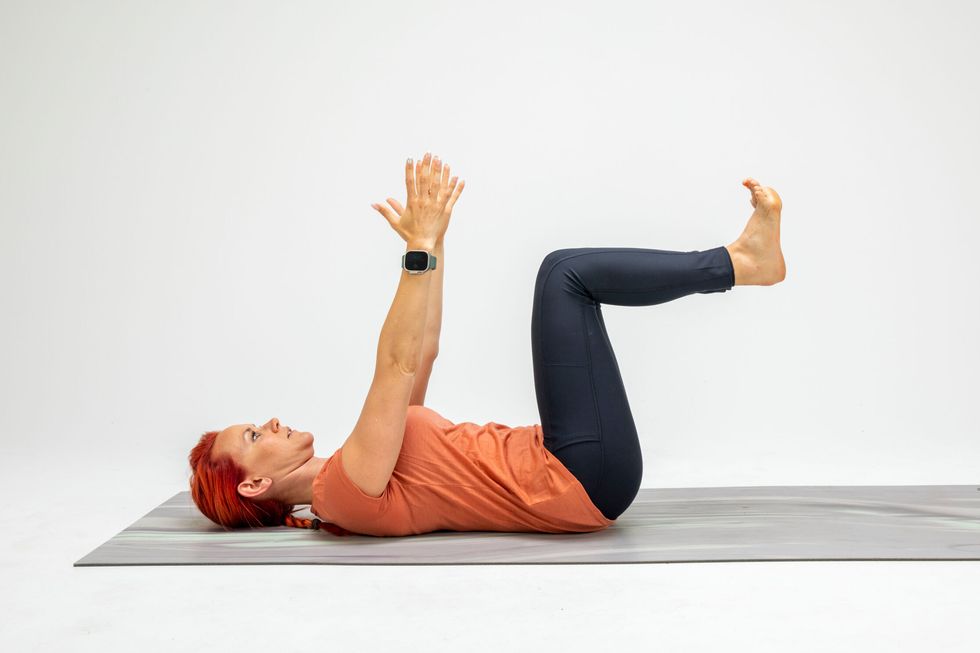
Why it works: This move strengthens the core and mimics the reciprocal action of riding a bike.
How to do it: Lie face up with arms extended toward the ceiling. Bend knees 90 degrees and raise thighs until perpendicular to the floor, knees over hips. This is the starting position. Lower left arm and right leg to the floor. Return to the starting position. Repeat on opposite side. Continue alternating for 30 to 45 seconds.
2. Bird Dog
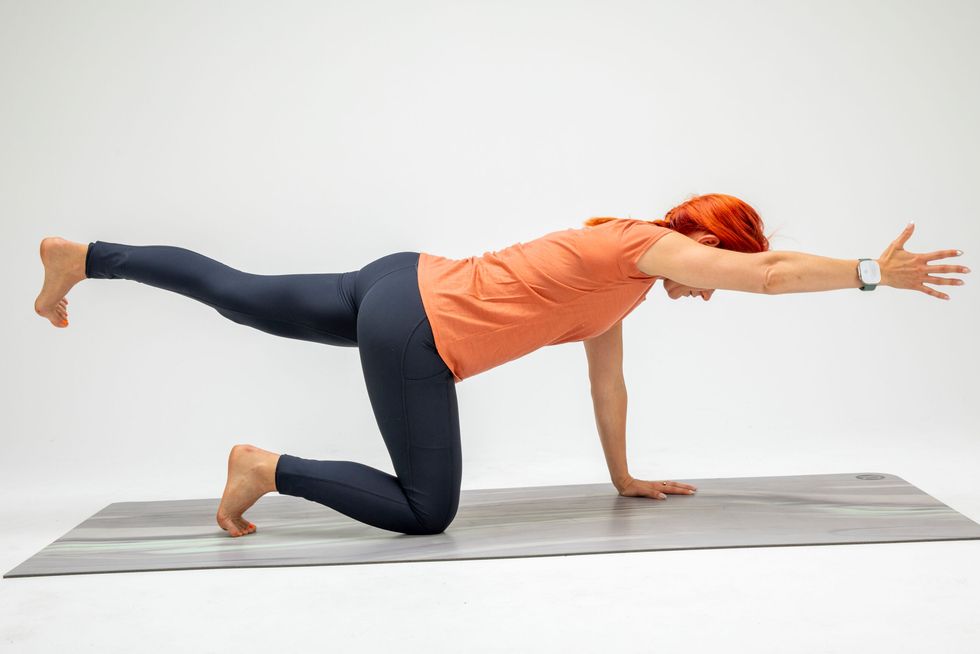
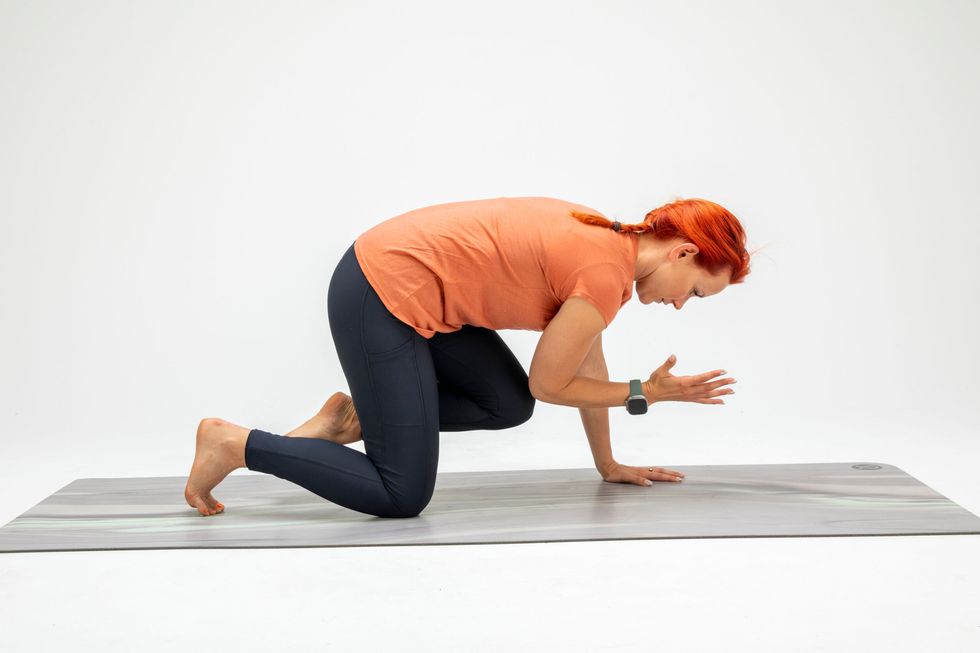
Why it works: Similar to the dead bug, but in reverse, this move stabilises the core while helping you practice the reciprocal action of cycling.
How to do it: Start on all fours, shoulders over wrists and knees under hips. With neck in a neutral position, extend left leg behind you while reaching right arm forward. Hold for 5 seconds. Then, pull elbow and knee in to touch at centre. Place back in all fours. Repeat on opposite side for 1 rep. Do 8-12 reps.
3. Banded High Knee March
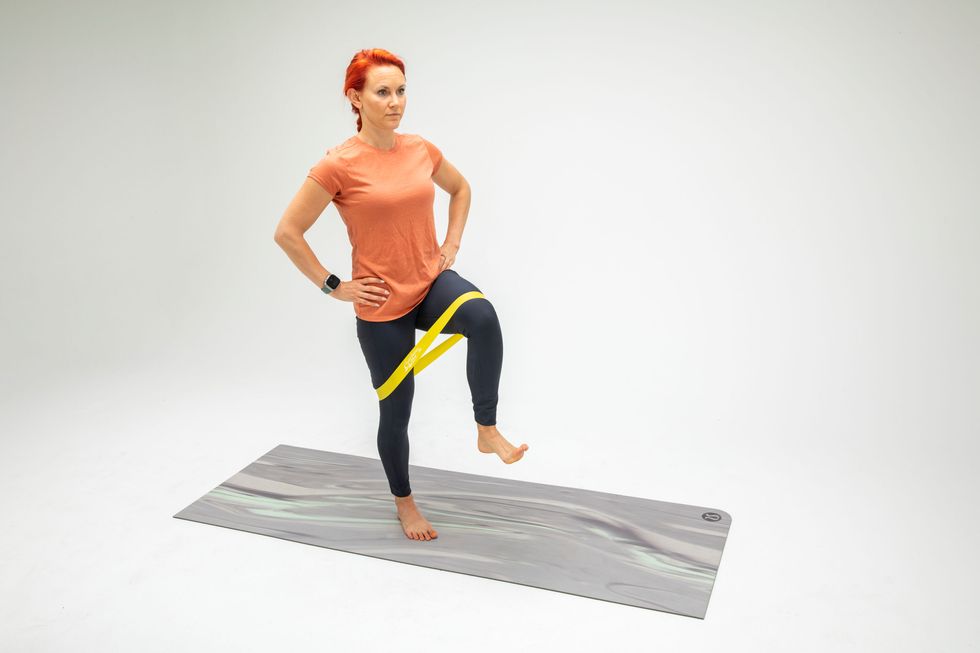
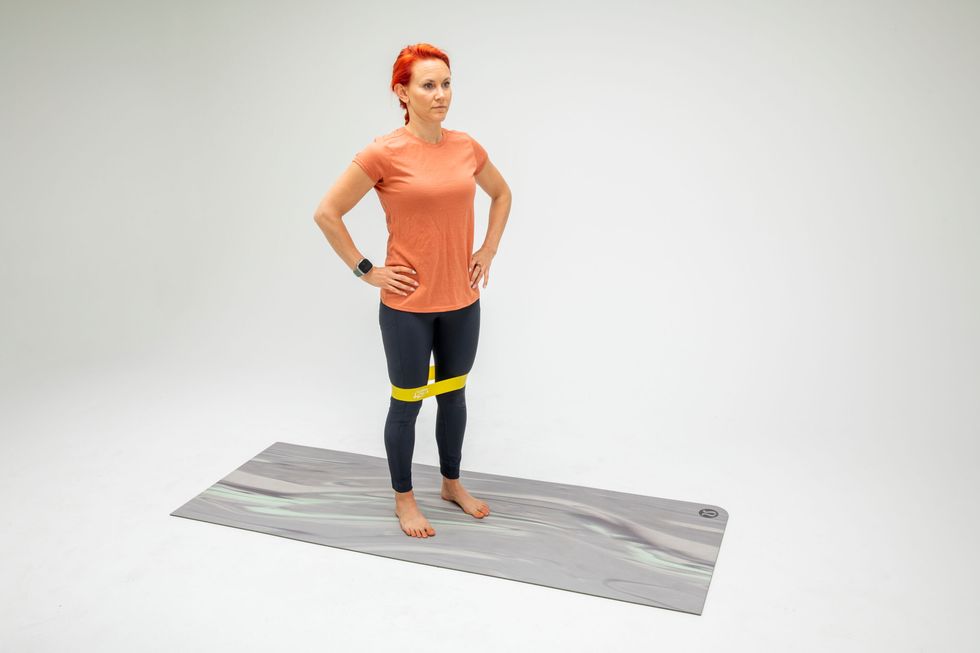
Why it works: Work the hip flexors, quads, and hamstrings for a well-rounded lower-body move.
How to do it: Place a resistance band around thighs and stand tall with feet hip-width apart. Lift one knee toward chest, flexing the hip. Lower leg and repeat on opposite side. Continue matching for 1 minute, alternating legs, while engaging core and keeping pelvis squared forward.
4. Single-Leg Bridge
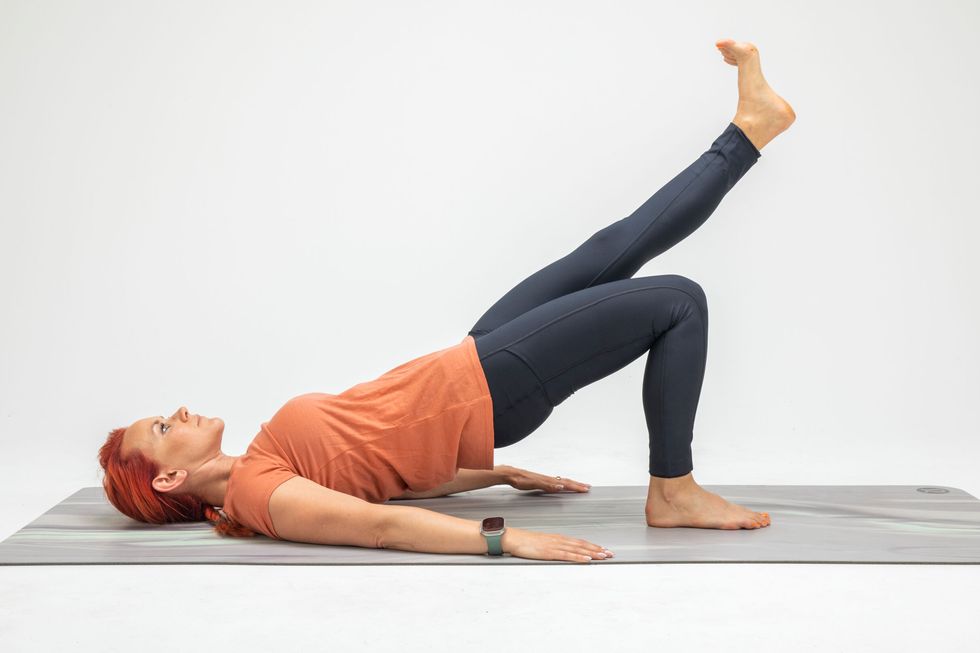
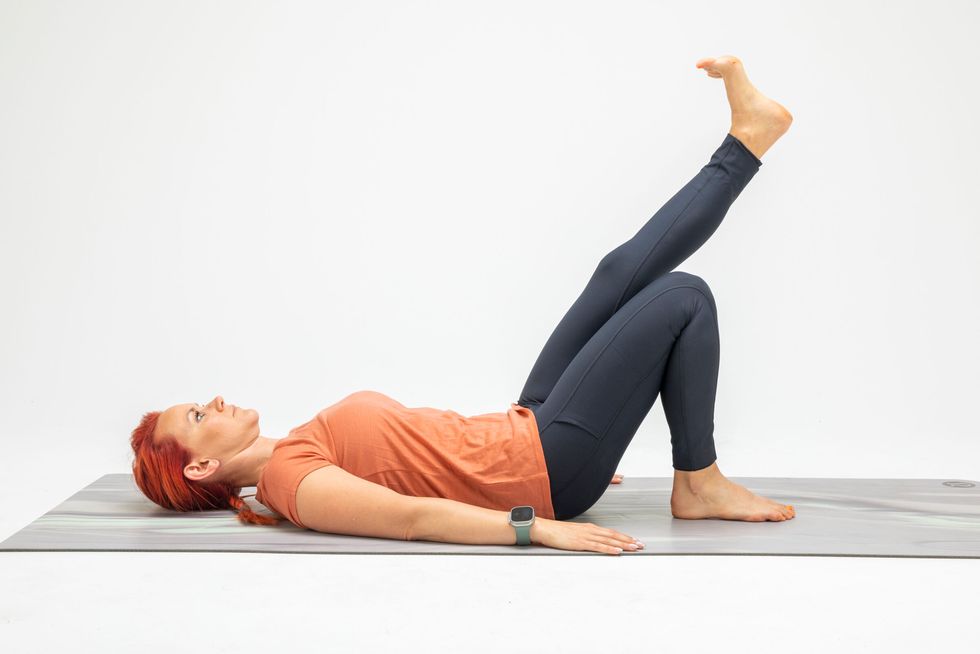
Why it works: Strengthen the core, hamstrings, and glutes, while improving stability and balance.
How to do it: Lie face up with knees bent and feet flat on floor. Extend right leg so foot is pointing toward ceiling. Exhale and push down through left heel to lift hips up, then slowly lower hips to floor. Repeat. Do 8-12 reps. Then repeat on opposite side.
5. Romanian Deadlift
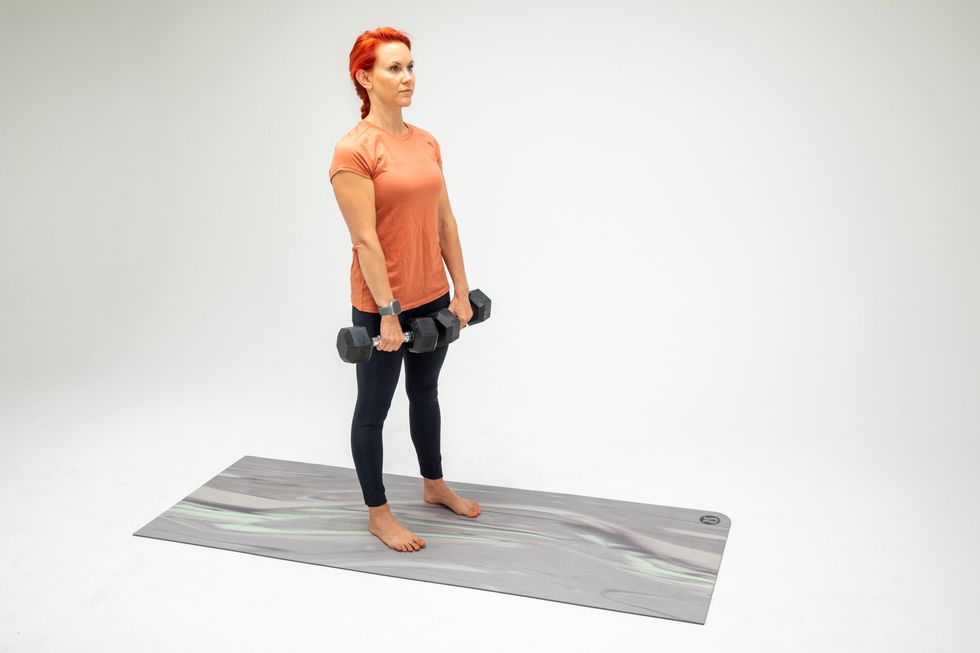
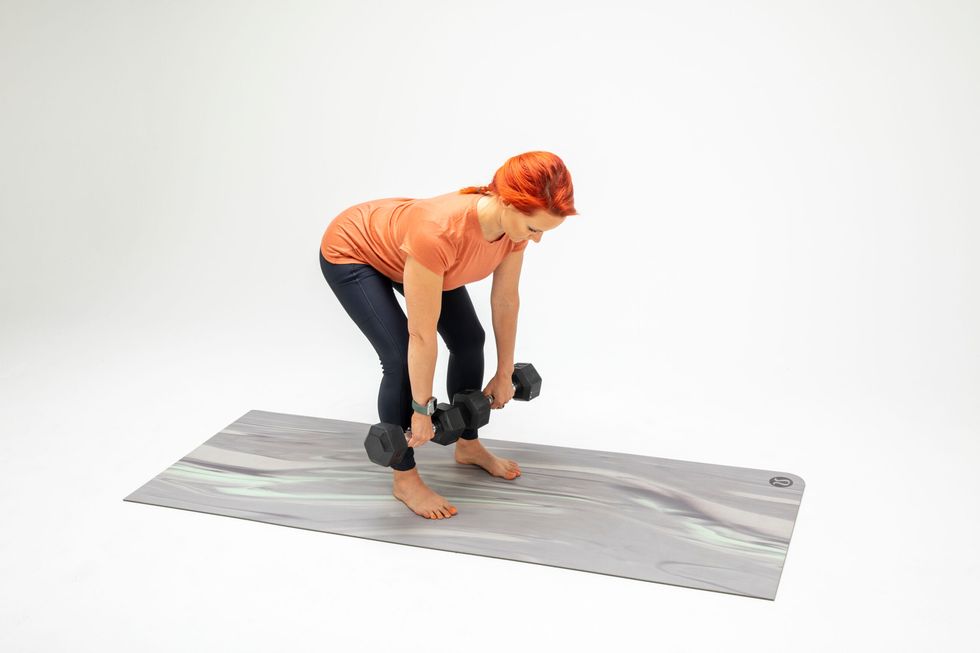
Why it works: Target your entire posterior chain with this deadlift variation, which also helps you maintain strong posture and a powerful pedal stroke.
How to do it: Stand with feet hip-width apart, holding a dumbbell in each hand. Keeping back straight, bend knees slightly and hinge at hips by sending butt straight back, lowering dumbbells while keeping them close to shins. Drive feet into floor to stand up, extending hips. Repeat. Do 8-12 reps.
6. Quad Stretch
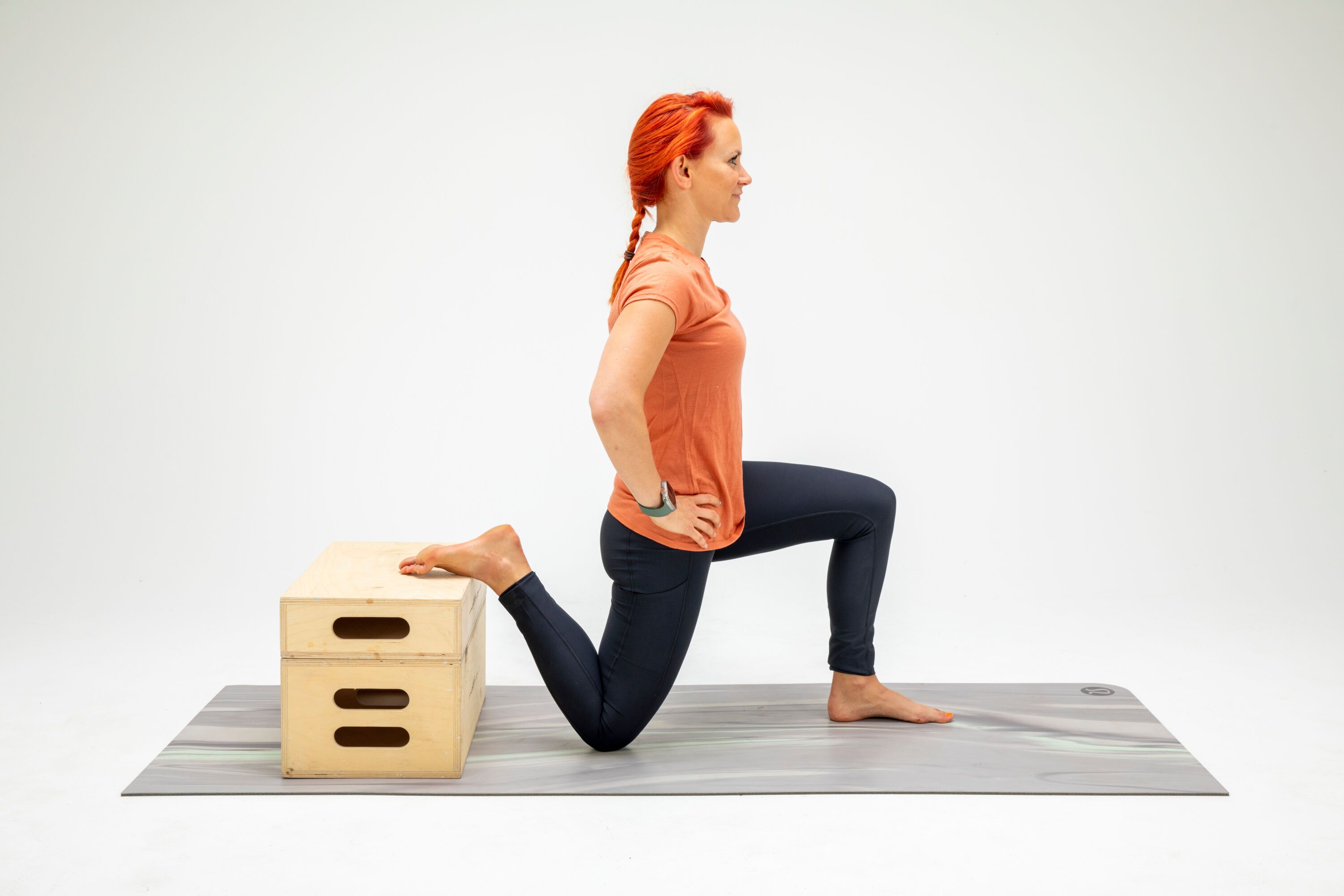
Why it works: As experts suggest, you need to stretch the quads and hip flexors to keep your SI joint happy. This move does just that.
How to do it: With left knee on the floor close to the front of a sofa, kick leg up so top of left foot is pressing into the edge of the seat. Step right foot out so knee is bent and thigh parallel to the floor. Hold 30 to 60 seconds. Then repeat on opposite side.
7. Downward Dog
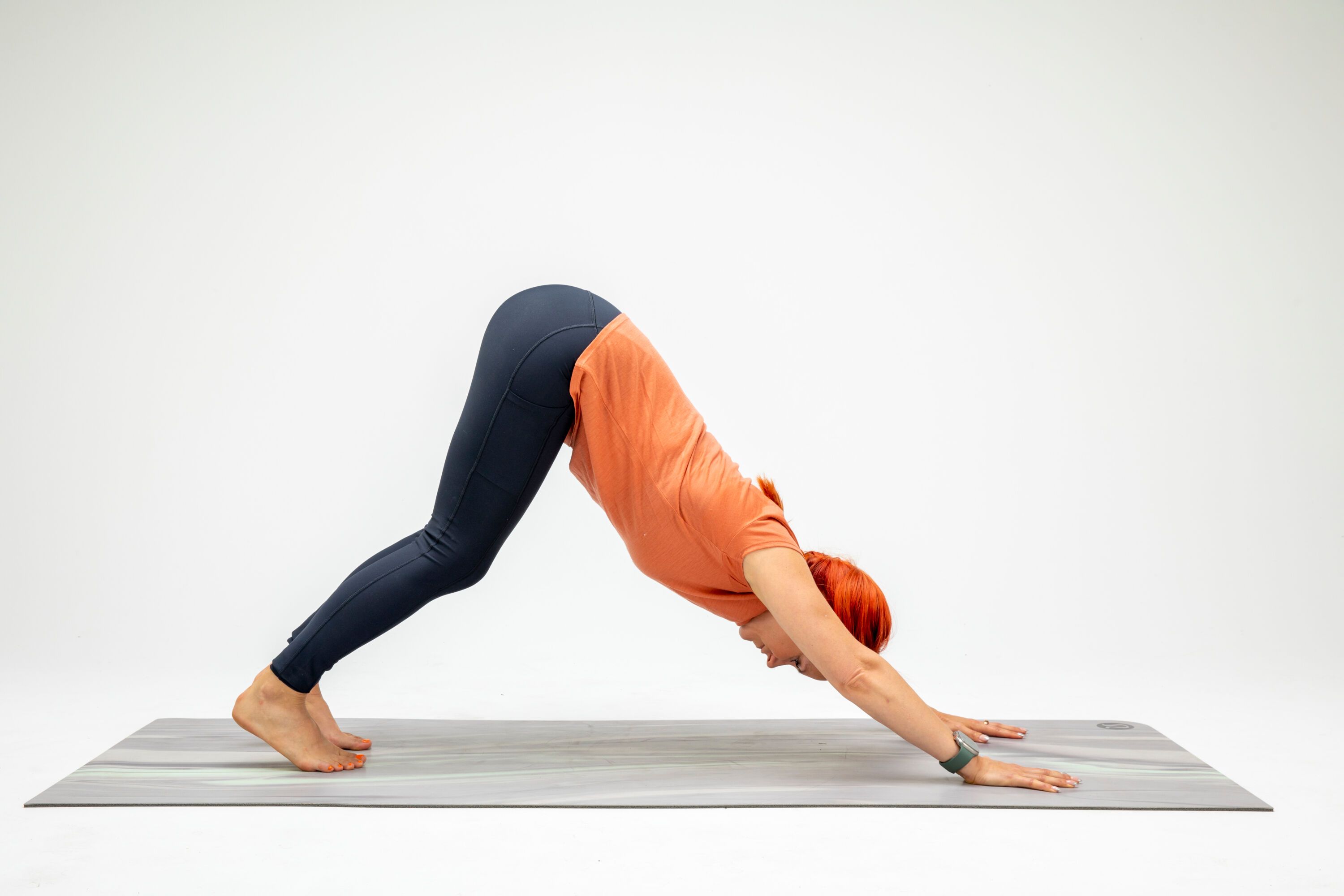
Why it works: Increase calf and hamstring flexibility with this yoga-inspired stretch.
How to do it: Start on all fours. Tuck toes under feet and straighten arms and legs, pushing hips toward the ceiling so body forms an upside-down V. Hold for several deep breaths, then return to all fours. Repeat once or twice.
8. Pigeon

Why it works: Stretch out the hips and lessen pain in glutes with this feel-good stretch.
How to do it: Start in downward dog. Lift right leg and bring right knee toward back of right wrist, then rotate shin until it’s as close to parallel to the short end of mat as is comfortable, keeping left leg straight behind you. Place hands on floor under shoulders and, keeping hips squared forward. Hold pose for several deep breaths. Return to downward dog. Then repeat on the other side.
READ MORE ON: injuries injury-prevention joints lower back pain sacroiliac si joint

